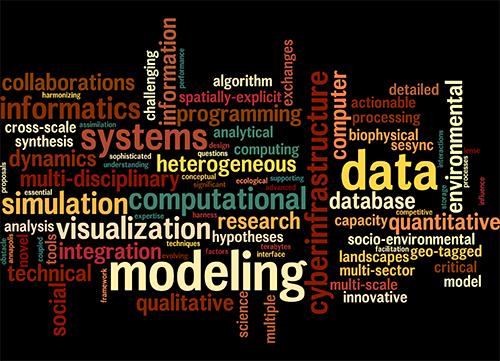
Over the last decade, agent-based modeling (ABM) has become a popular approach for investigating human–environment interactions (An, 2012). The recognition that humans are primary agents of change in the natural landscape (Ellis and Ramankutty, 2008)—combined with the ability of ABMs to explicitly model human decision-making—drives the popularity of this approach. A particularly interesting application of ABMs to socio-environmental systems has been to explore sudden transitions, or thresholds, that can emerge in natural systems due to human activities. A relevant example of interactions between sea level rise, rapid shoreline erosion, and beach nourishment can be found here.
In addition to being cool science, this example demonstrates a fundamental challenge of studying human–environment interactions and why computational models are becoming so important: the long time and massive spatial scales of most human–environment systems make it impossible to conduct traditional field-based research. Further, if one wants to learn something by comparing human–environment interactions across multiple locations, then either a small army of field technicians that can be deployed across sites is required, or the researcher must bring the real system into the computer via a simulation model. These cross-site comparative questions are currently some of the most compelling research questions being asked: how are human–environment systems similar or different across locations; is there something about a particular location that makes human–environment interactions more or less sustainable; and under what conditions do sudden transitions in sustainability occur?
Of course, just because it is easier to ask cross-site comparative questions with computational rather than field-based approaches, doesn't mean answering them is any easier. In fact, carrying out many iterations of computational experiments for a large set of study sites can be computationally challenging. Depending on the models and number of study sites, one could be facing days (or even ... gulp ... weeks) of computer time!
Fortunately, in this age of interdisciplinary research teams, socio-environmental researchers are finding strong allies in computer scientists. These new partnerships bring challenges for both parties. From my own experience as a socio-environmental researcher, I have had to become fluent with more computing jargon than I knew existed in order to ask the right questions, and my computer scientist colleagues are finding new challenges with parallel computing of distributed, interacting, rule-based algorithms common in ABMs. Add large and complicated data sets for parameterizing and testing ABMs to it, and the computational challenges become more than most individual researchers can handle. Thus, finding adequate computational support is critical for progressing beyond these technical barriers, and can present opportunities to ask new research questions that about complex, large-scale socio-environmental systems that could not otherwise be asked.
Researchers interested in data-intensive and modeling-based projects are invited to submit applications to SESYNC’s newest research theme. Full details on the call for proposals can be found here.
References
An, L. (2012). Modeling human decisions in coupled human and natural systems: review of agent-based models. Ecological Modelling, 229, 25–36.
Ellis, E.C. and Ramankutty, N. (2008). Putting people in the map: Anthropogenic biomes of the world. Frontiers in Ecology and the Environment, 6, 439–47.